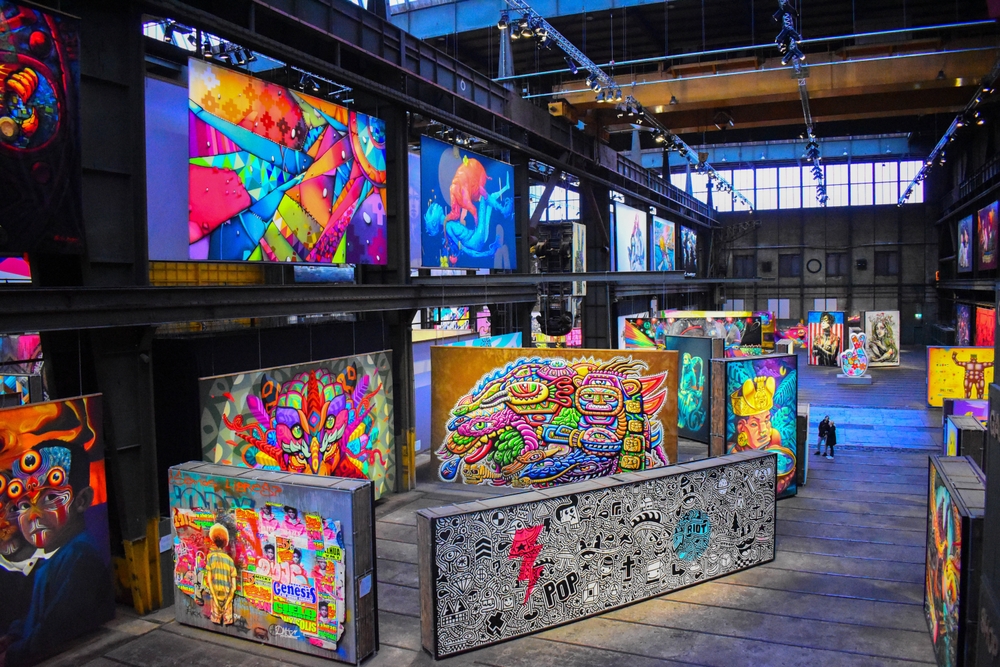Neon Renaissance: The Resurgence of Luminous Art
In the realm of contemporary art, a dazzling renaissance is unfolding. Neon, once relegated to the realms of retro nostalgia and kitschy signage, has reemerged as a powerful medium for artistic expression. This luminous art form, championed by a new generation of creators, is pushing boundaries and challenging perceptions. From gallery installations to public spaces, neon art is captivating audiences with its vibrant glow and conceptual depth. As we delve into this electrifying movement, we'll explore its historical roots, current innovations, and the artists illuminating our world in unexpected ways.

Neon’s Cultural Ebb and Flow
As with many art forms, neon experienced periods of popularity and decline. The 1980s saw a neon boom, with the medium adorning everything from fashion to interior design. However, by the late 1990s, neon had fallen out of favor, often associated with dated aesthetics and excess. This decline led to the closure of many neon workshops and a loss of traditional craftsmanship. Yet, as we entered the new millennium, a renewed interest in handmade, analog processes began to emerge, setting the stage for neon’s comeback.
The Contemporary Neon Revival
Today’s neon renaissance is characterized by a fusion of traditional techniques and modern sensibilities. Contemporary artists are drawn to neon’s unique ability to manipulate light and space, creating immersive experiences that blur the lines between sculpture, installation, and performance. This revival is not just about aesthetics; it’s a response to our increasingly digital world. The warmth and physicality of neon offer a tactile counterpoint to the cold glow of LED screens, resonating with audiences seeking authentic, handcrafted experiences.
Innovators in the Field
At the forefront of this luminous movement are artists pushing the boundaries of what neon can achieve. Lili Lakich, a Los Angeles-based artist, has been working with neon for over four decades. Her large-scale sculptures and installations explore themes of identity, memory, and the human condition. In New York, Lite Brite Neon Studio collaborates with contemporary artists to realize complex neon projects, bridging the gap between traditional craftsmanship and cutting-edge design.
The Technical Artistry of Neon
Creating neon art is a complex process that requires both scientific knowledge and artistic vision. Glass tubes are carefully bent to shape, then filled with noble gases like neon, argon, or krypton. When electricity is applied, these gases emit their characteristic glow. The color palette of neon art extends far beyond the classic red-orange associated with the gas; different combinations of gases and phosphor coatings can produce a wide spectrum of hues. This technical complexity adds another layer of artistry to neon works, as creators must master both the visual and scientific aspects of their medium.
Neon in Public Spaces
The resurgence of neon art isn’t confined to galleries and museums. Cities around the world are embracing neon as a way to enliven public spaces and create memorable landmarks. In Hong Kong, traditional neon signs are being preserved and celebrated as part of the city’s cultural heritage. Meanwhile, in Las Vegas, the Neon Museum serves as both a graveyard and showcase for iconic signs, attracting visitors eager to experience the city’s luminous history.
Environmental Considerations and Future Innovations
As awareness of energy consumption grows, neon artists are addressing environmental concerns. Many are exploring more sustainable practices, such as using LED technologies that mimic the look of neon while consuming less power. Others are experimenting with solar-powered neon installations, creating self-sustaining works that illuminate public spaces without drawing from the grid. These innovations not only make neon art more eco-friendly but also open up new possibilities for placement and design.
The Cultural Impact of the Neon Renaissance
The resurgence of neon art reflects broader cultural trends towards nostalgia, craftsmanship, and experiential art. In an age of digital overload, neon’s analog glow offers a tangible connection to the physical world. Its association with urban nightlife and retro aesthetics taps into collective memories and cultural narratives. Moreover, the medium’s ability to transform spaces with light and color makes it particularly suited for the Instagram era, where immersive, photogenic installations drive engagement and discussion.
Challenges and Opportunities
Despite its renewed popularity, the neon art world faces challenges. The decline of traditional neon signage has led to a shortage of skilled craftspeople, threatening the continuity of techniques. Additionally, the high cost and technical complexity of neon can be barriers for emerging artists. However, these challenges also present opportunities. Educational programs and apprenticeships are emerging to train a new generation of neon artists, while collaborations between artists and technicians are fostering innovation and knowledge-sharing.
The Future Glows Bright
As we look to the future, the neon renaissance shows no signs of dimming. Its unique blend of nostalgia and innovation continues to captivate artists and audiences alike. From intimate gallery pieces to monumental public installations, neon art is redefining our relationship with light and space. As technology evolves and artists push the boundaries of the medium, we can expect to see even more groundbreaking works that challenge our perceptions and illuminate our world in new and exciting ways. The neon renaissance is more than just a trend; it’s a vibrant testament to the enduring power of light as a medium for artistic expression.





